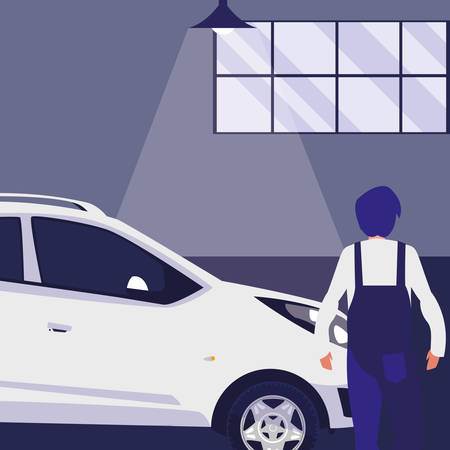Introduction to Auto Insurance in the US
Auto insurance plays a crucial role for drivers across the United States. It is more than just another monthly bill—its a financial safety net that protects you, your passengers, and other drivers on the road. Understanding how auto insurance works and why requirements vary from state to state can help you make informed choices about your coverage.
Why Auto Insurance Matters
Car accidents can happen to anyone, even the safest drivers. Auto insurance helps cover the costs of injuries, property damage, and legal fees that may result from an accident. Without insurance, you could be left paying thousands of dollars out of pocket. In fact, most states require at least some form of auto insurance to legally drive.
How Auto Insurance Works
When you buy auto insurance, you agree to pay a premium (usually monthly or annually) to an insurance company. In return, the insurer promises to help cover certain expenses if youre involved in an accident or your car is damaged or stolen. The amount they will pay depends on the type of coverage you choose and the limits set in your policy.
Main Types of Auto Insurance Coverage
| Coverage Type | What It Covers |
|---|---|
| Liability | Bodily injury and property damage you cause to others |
| Collision | Damage to your car from hitting another vehicle or object |
| Comprehensive | Non-collision events like theft, fire, or natural disasters |
| Personal Injury Protection (PIP) | Your medical expenses after an accident, regardless of fault |
| Uninsured/Underinsured Motorist | Costs if youre hit by someone without enough insurance |
Why Each State Has Its Own Requirements
The United States is made up of 50 states, each with its own government and laws. Because driving conditions, population density, and local risks vary so much from one state to another, each state sets its own minimum auto insurance requirements. Some states require only basic liability coverage, while others also mandate additional protections like PIP or uninsured motorist coverage. Knowing your states rules is essential for staying legal and protected on the road.
2. Minimum Liability Coverage by State
When it comes to auto insurance in the United States, each state sets its own rules for the minimum amount of liability coverage drivers must carry. Liability coverage is what pays for injuries or damages you cause to others in a car accident. Understanding these requirements is essential because driving without at least the minimum coverage can result in fines, license suspension, or even legal trouble.
What Is Liability Insurance?
Liability insurance typically covers two main things:
- Bodily Injury Liability (BI): Pays for medical expenses, lost wages, and legal fees if you injure someone in an accident.
- Property Damage Liability (PD): Pays for repairs or replacement if you damage another person’s property with your vehicle.
State-by-State Minimum Requirements
The table below shows the minimum required liability limits for each state. The numbers are usually written as three figures: Bodily Injury per person / Bodily Injury per accident / Property Damage per accident, all in US dollars. For example, “25/50/25” means $25,000 BI per person, $50,000 BI per accident, and $25,000 PD per accident.
| State | Bodily Injury (per person) |
Bodily Injury (per accident) |
Property Damage |
|---|---|---|---|
| Alabama | $25,000 | $50,000 | $25,000 |
| California | $15,000 | $30,000 | $5,000 |
| Florida* | N/A* | N/A* | $10,000* |
| Illinois | $25,000 | $50,000 | $20,000 |
| Maine | $50,000 | $100,000 | $25,000 |
| New York | $25,000 | $50,000 | $10,000 |
| Texas | $30,000 | $60,000 | $25,000 |
| *Florida uses Personal Injury Protection (PIP) instead of traditional bodily injury liability. | |||
Key Differences Across the US
- Higher Limits: Some states like Maine and Alaska require higher minimums than most other states.
- No-Fault States: Places like Florida use a no-fault system with Personal Injury Protection (PIP), so liability requirements work differently.
- Lesser Property Damage Coverage: Some states like California have lower property damage requirements compared to others.
- Punishments Vary: Penalties for not meeting these minimums differ by state—some may suspend your license or registration on the spot.
Remember: Minimum Is Not Always Enough!
The minimum coverage required by law is just that—the minimum. It might not be enough to fully cover damages after a serious accident. Many drivers choose higher limits to protect themselves financially.

3. Optional Coverages and Add-Ons
When shopping for auto insurance in the US, every state has its own minimum requirements. However, many drivers choose to add optional coverages to better protect themselves, their passengers, and their vehicles. Understanding these extra options can help you customize a policy that fits your lifestyle and budget.
Common Optional Auto Insurance Coverages
| Coverage Type | What It Covers | Why Consider It? |
|---|---|---|
| Comprehensive | Non-collision damages like theft, vandalism, fire, natural disasters, or hitting an animal. | Useful if you want protection from incidents other than car accidents. |
| Collision | Repairs or replacement of your car after a collision, regardless of fault. | Helps cover damage to your own car after an accident. |
| Uninsured/Underinsured Motorist (UM/UIM) | Bodily injury and property damage if the at-fault driver doesn’t have enough (or any) insurance. | Important in areas where many drivers are uninsured or underinsured. |
| Medical Payments (MedPay) | Covers medical expenses for you and your passengers after an accident, no matter who’s at fault. | Adds extra peace of mind beyond health insurance coverage limits. |
| Personal Injury Protection (PIP) | Pays for medical costs, lost wages, and sometimes other expenses like child care after an accident. | Required in some states; helpful for more comprehensive personal coverage. |
| Roadside Assistance | Towing, battery jump-starts, flat tire changes, lockout service, and fuel delivery. | Convenient if you drive long distances or want help during breakdowns. |
| Rental Car Reimbursement | The cost of a rental car while your vehicle is being repaired after a covered claim. | Keeps you mobile if your car needs repairs after an accident. |
| Gap Insurance | The difference between what you owe on your car loan/lease and the actual cash value of your vehicle if totaled. | Recommended if you’re financing or leasing a newer car. |
Selecting the Right Add-Ons for Your Needs
Your choice of optional coverage depends on several factors: the value and age of your vehicle, how much you drive, where you live, and your financial situation. For example:
- If you have a new car or a loan/lease, gap insurance and comprehensive/collision are smart picks.
- If you live in a region with harsh weather or high theft rates, comprehensive coverage is especially helpful.
- If you frequently travel long distances or commute daily, roadside assistance and rental reimbursement could be valuable add-ons.
- If health insurance is limited or you want extra protection for passengers, MedPay or PIP is worth considering—especially in states where PIP is required by law.
State-by-State Variations in Optional Coverage Availability
While most optional coverages are available nationwide, some types—like Personal Injury Protection—are only offered or required in certain states (for example: Florida, Michigan, New York). Always check your state’s rules before adding specific coverages to your policy. Insurance agents can also help explain which add-ons make sense based on where you live and drive.
Tailoring Your Policy for Peace of Mind
No two drivers have exactly the same needs. Adding optional coverages allows you to build an auto insurance policy that offers just the right amount of protection for your budget and lifestyle. Take time to review each option and discuss with your insurer what works best for you and your family as you navigate state-by-state requirements across the US.
4. Penalties for Lack of Insurance
Driving without the required auto insurance is a serious offense in every state across the US. Each state has its own set of laws and penalties, which can range from fines to license suspension and even jail time. It’s important to know what can happen if you get caught driving uninsured, as the consequences can impact your finances, your ability to drive, and even your legal record.
Common Penalties for Driving Without Insurance
Most states impose a combination of financial and legal penalties for failing to carry auto insurance. Here are some typical consequences:
- Fines: Monetary penalties that vary by state and repeat offenses.
- License Suspension: Temporary loss of your driver’s license.
- Vehicle Impoundment: Your car may be towed and held until proof of insurance is provided.
- SR-22 Requirement: Some states require high-risk insurance filings after a violation.
- Jail Time: In severe or repeated cases, you might face short-term incarceration.
State-by-State Penalty Comparison
The table below highlights some examples of penalties for driving without insurance in various states:
| State | First Offense Fine | License Suspension | Other Penalties |
|---|---|---|---|
| California | $100–$200 | No, but vehicle may be impounded | Additional fees; SR-22 for repeat offenses |
| Texas | $175–$350 | No, but repeat offenses can lead to suspension | $250 annual surcharge for 3 years |
| Florida | $150–$500 | Yes (up to 3 years) | $150 reinstatement fee; possible impoundment |
| New York | $150–$1,500 | Yes (at least 1 year) | $750 civil penalty; registration revoked |
| Illinois | $500–$1,000 | Yes (up to 3 months) | $100 reinstatement fee; SR-22 required |
| Pennsylvania | $300 minimum | Yes (3 months) | $88 restoration fee; registration suspension |
| Nevada | $250–$1,000 | Yes (up to 30 days) | $250 reinstatement fee; vehicle impoundment possible |
How States Find Uninsured Drivers
Many states use electronic databases that track insurance coverage in real time. Law enforcement can also check your status during traffic stops or after an accident. If you are found driving without insurance, the penalties will apply immediately—sometimes on the spot.
Avoiding Trouble on the Road
The best way to avoid these penalties is simple: always keep your auto insurance up-to-date and carry proof with you whenever you drive. Not only does this keep you legal, but it also protects you financially if an accident occurs. Remember, every state has its own requirements and penalties, so it’s important to stay informed based on where you live or travel within the US.
5. How to Shop for Auto Insurance
Understanding What Affects Your Premium
Before you start shopping, it’s important to know what factors influence your auto insurance premium. This helps you understand why prices vary between providers and what you can do to potentially lower your costs.
| Factor | How It Impacts Your Premium |
|---|---|
| Driving Record | Clean records usually mean lower premiums, while accidents or violations increase rates. |
| Location (State & ZIP Code) | Some states require more coverage; urban areas often have higher rates due to increased risk of theft or accidents. |
| Vehicle Type | Luxury or sports cars cost more to insure than family sedans or older vehicles. |
| Coverage Amounts | The more coverage you buy, the higher your premium. |
| Deductible | Choosing a higher deductible can lower your monthly payment, but youll pay more out-of-pocket after an accident. |
| Credit Score (in most states) | Better credit often means better rates, though some states limit how much insurers can use this factor. |
Tips for Comparing Auto Insurance Providers
- Gather Quotes from Multiple Companies: Rates can vary widely. Use online comparison tools or work with an independent agent to get at least three quotes.
- Review State Requirements: Make sure the policies you compare meet the minimum requirements for your state. Some states require personal injury protection (PIP) or uninsured motorist coverage, while others don’t.
- Check Coverage Limits and Deductibles: Always compare the same coverage levels and deductibles across quotes for a true apples-to-apples comparison.
- Research Company Reputation: Look up reviews and financial strength ratings from organizations like J.D. Power, AM Best, and the Better Business Bureau. Good customer service matters when you need to file a claim.
- Ask About Discounts: Many insurers offer discounts for things like safe driving records, bundling auto with home insurance, being a student, or installing anti-theft devices.
- Understand Optional Coverages: Consider whether add-ons like roadside assistance, rental reimbursement, or gap insurance make sense for you and are worth the extra cost.
Selecting the Best Policy for Your Situation
No two drivers are exactly alike, so it’s key to match your policy to your needs and budget. Here’s a quick checklist to help guide your decision-making process:
| Your Situation | What to Consider in a Policy |
|---|---|
| You drive an older car with low value | You might skip comprehensive and collision coverage if repairs would cost more than the car is worth. |
| You have a loan or lease on your vehicle | Lenders typically require full coverage (comprehensive + collision). |
| You live in a no-fault state | PIP coverage may be required; check state laws. |
| You have teenage drivers on your policy | Look for companies with good student discounts or safe driver programs. |
| Your state has high uninsured motorist rates | Add uninsured/underinsured motorist protection for extra peace of mind. |
A Few Final Best Practices When Shopping for Auto Insurance
- Review Your Policy Annually: Life changes (like moving, getting married, or buying a new car) can affect your rates and coverage needs.
- Avoid Letting Coverage Lapse: Gaps in coverage can lead to higher premiums later on.
- If You Have Questions, Ask! Don’t hesitate to contact agents directly to clarify anything that’s unclear in your policy options or pricing.
The right auto insurance policy depends on both state requirements and your individual circumstances. Taking time to compare providers and understand what affects your premium will help you find the best fit—and save money along the way.

